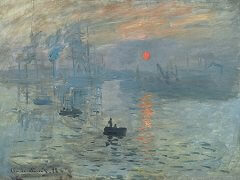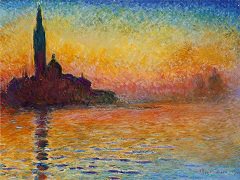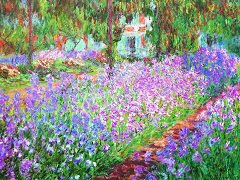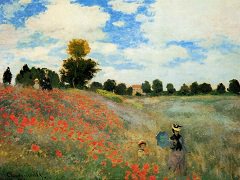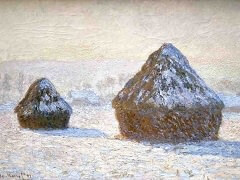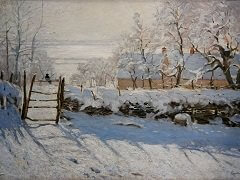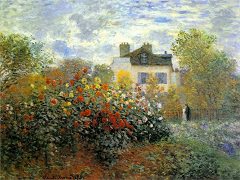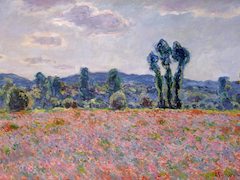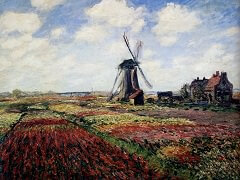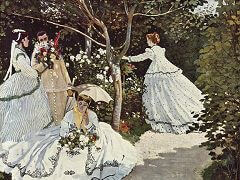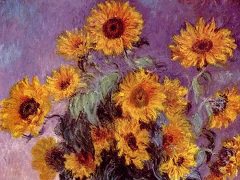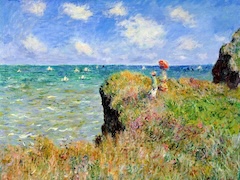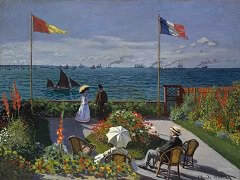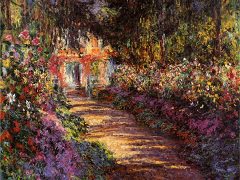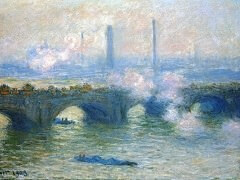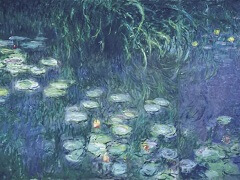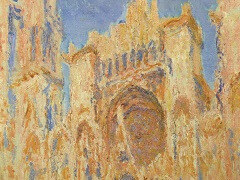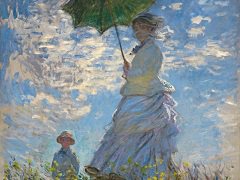Claude Monet and Henri Matisse
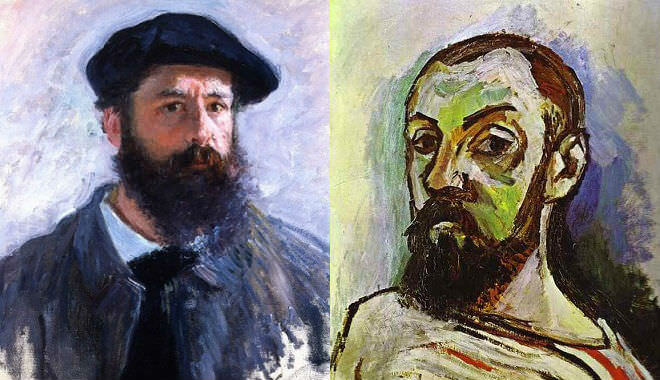
The Impressionists' desire to look at the world with a new freshness and immediacy continues to appeal to audiences today, making it the most popular style of painting in the world. The Impressionists were radical in their own time because "High Art" was supposed to depict gods, heroes and wars subjects believed to be timeless. Instead, they painted the world we actually live in, one with average people seated having a drink at a café, train stations, dancers, or an empty field of poppies. Instead of creating painstakingly detailed paintings, they explored the way we actually see: they saw and captured the purple and blue of shadows, and the vibrating yellow, pink and green colors of the sky. Critics of the 19th century saw them as scandalous and the word "impressionist" was originally an insult. Now, we see that the Impressionists were really the first modern artists, painting contemporary life around them.
Typical of the Impressionists' approach is Claude Monet's The Magpie of 1868. The scene is humble and ordinary, but the real subject is the dramatic play of light and shadow moving across the street in broad swaths of energetic paint. Monet's art dances between realism and abstraction as it evokes nature's atmosphere at the same time it calls attention to the reality of paint itself on the canvas.
Henri Matisse enrolled at the prestigious École des Beaux Arts in Paris, where he only stayed for two years due to his disillusionment with the curriculum, and artistic differences with the teachers. After discovering the works of Claude Monet and the impressionists, he decided to make color the central focus of his work. As opposed to the impressionists, Matisse used bright colors, and seldom painted outside.
In Henri Matisse's bold canvas, The Dance, visitors see a very young Matisse moving away from Impressionism toward the powerful and arbitrary color for which he is famous and which inspired so much modern art to follow.
As Claude Monet had become the leader of the Impressionist movement, Henri Matisse would soon take the lead with Fauvism, a style not unlike that of the impressionists, but where vivid colors are substituted for natural ones.
Merely a decade after his first showing, Matisse was now considered one of the most important artists of the new century, and his talent was appreciated worldwide. He had an exhibit with Picasso at the Paul Guillaume Gallery in Paris in 1918; and he won first prize at the Carnegie International Exhibition in 1927.

